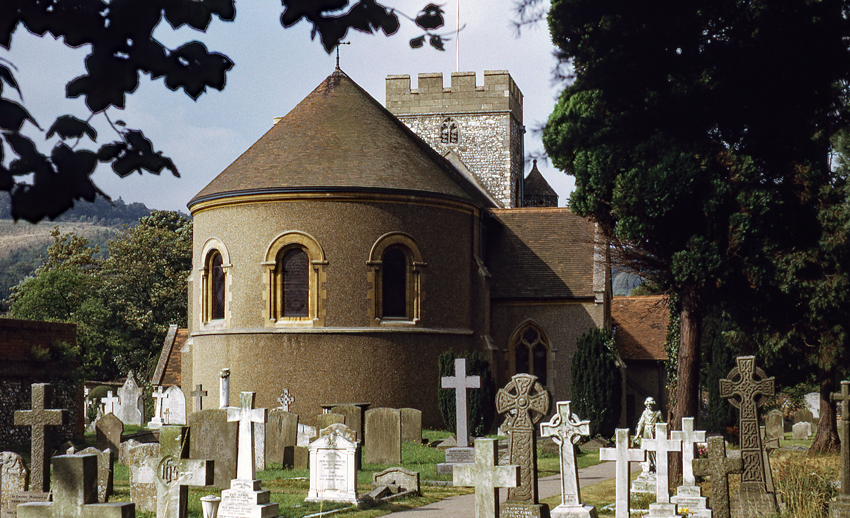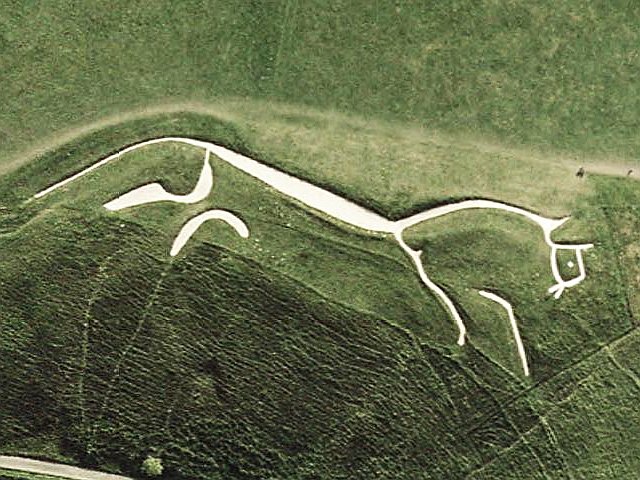|
Moulsford Downs
Moulsford Downs is a biological Site of Special Scientific Interest north-west of Goring-on-Thames in Oxfordshire. This chalk grassland site on the Berkshire Downs has a rich wildlife. The diverse invertebrate fauna includes the uncommon robber-fly '' Leptarthrus brevirostris'', the adonis blue The Adonis blue (''Lysandra bellargus'', also known as ''Polyommatus bellargus'') is a butterfly in the family Lycaenidae. It inhabits the Palearctic realm (Western Europe, Central Europe, Southern Europe, Southern Russia, Iraq, Iran, Caucasus, T ... butterfly, the juniper shield bug, the weevils '' Baris picicornis'' and seed beetle '' Phyllobius viridicollis'', the leaf beetle '' Phyllotreta nodicornis'' and the '' Bruchus cisti''. The site is private land with no public access. References {{SSSIs Oxfordshire Sites of Special Scientific Interest in Oxfordshire ... [...More Info...] [...Related Items...] OR: [Wikipedia] [Google] [Baidu] |
Site Of Special Scientific Interest
A Site of Special Scientific Interest (SSSI) in Great Britain or an Area of Special Scientific Interest (ASSI) in the Isle of Man and Northern Ireland is a conservation designation denoting a protected area in the United Kingdom and Isle of Man. SSSI/ASSIs are the basic building block of site-based nature conservation legislation and most other legal nature/geological conservation designations in the United Kingdom are based upon them, including national nature reserves, Ramsar sites, Special Protection Areas, and Special Areas of Conservation. The acronym "SSSI" is often pronounced "triple-S I". Selection and conservation Sites notified for their biological interest are known as Biological SSSIs (or ASSIs), and those notified for geological or physiographic interest are Geological SSSIs (or ASSIs). Sites may be divided into management units, with some areas including units that are noted for both biological and geological interest. Biological Biological SSSI/ASSIs may ... [...More Info...] [...Related Items...] OR: [Wikipedia] [Google] [Baidu] |
Goring-on-Thames
Goring-on-Thames (or Goring) is a village and civil parish on the River Thames in South Oxfordshire, England, about south of Wallingford and northwest of Reading. It had a population of 3,187 in the 2011 census, put at 3,335 in 2019. Goring & Streatley railway station is on the main Oxford–London line. Most land is farmland, with woodland on the Goring Gap outcrop of the Chiltern Hills. Its riverside plain encloses the residential area, including a high street with shops, pubs and restaurants. Nearby are the village churches – one dedicated to St Thomas Becket has a nave built within 50 years of the saint's death, in the early 13th century, along with a later bell tower. Goring faces the smaller Streatley across the Thames. The two are linked by Goring and Streatley Bridge. Geography Goring is on the left bank of the River Thames in the Goring Gap between the Berkshire Downs and Chiltern Hills, about north-west of Reading and south of Oxford. Across the river is the B ... [...More Info...] [...Related Items...] OR: [Wikipedia] [Google] [Baidu] |
Oxfordshire
Oxfordshire is a ceremonial and non-metropolitan county in the north west of South East England. It is a mainly rural county, with its largest settlement being the city of Oxford. The county is a centre of research and development, primarily due to the work of the University of Oxford and several notable science parks. These include the Harwell Science and Innovation Campus and Milton Park, both situated around the towns of Didcot and Abingdon-on-Thames. It is a landlocked county, bordered by six counties: Berkshire to the south, Buckinghamshire to the east, Wiltshire to the south west, Gloucestershire to the west, Warwickshire to the north west, and Northamptonshire to the north east. Oxfordshire is locally governed by Oxfordshire County Council, together with local councils of its five non-metropolitan districts: City of Oxford, Cherwell, South Oxfordshire, Vale of White Horse, and West Oxfordshire. Present-day Oxfordshire spanning the area south of the Thames was h ... [...More Info...] [...Related Items...] OR: [Wikipedia] [Google] [Baidu] |
Berkshire Downs
The Berkshire Downs are a range of chalk downland hills in South east England split between the counties of Berkshire and Oxfordshire. They are part of the North Wessex Downs Area of Outstanding Natural Beauty. The western parts of the downs are also known as the Lambourn Downs. Geography The Berkshire Downs run east–west, with their scarp slope facing north into the Vale of White Horse and their dip slope bounded by the course of the River Kennet. Geologically they are continuous with the Marlborough Downs to the west and the Chilterns to the east. In the east they are divided from the Chilterns by Goring Gap on the River Thames. In the west their boundary is generally taken to be the border between Berkshire and Wiltshire, although the downs in Wiltshire between the Berkshire border and the valley of the River Og are sometimes considered to be part of the Berkshire Downs. History English downland has attracted human habitation since prehistoric times. The ancient ... [...More Info...] [...Related Items...] OR: [Wikipedia] [Google] [Baidu] |
Leptarthrus Brevirostris
''Leptarthrus brevirostris '' is a Palearctic The Palearctic or Palaearctic is the largest of the eight biogeographic realms of the Earth. It stretches across all of Eurasia north of the foothills of the Himalayas, and North Africa. The realm consists of several bioregions: the Euro-Sibe ... species of robber fly in the family Asilidae. Milan Hradský & Fritz Geller-Grimm (1997) ublished in: Mitteilungen des Internationalen Vereins 22(1/2): 11-14; Frankfurt a.M. References External links [...More Info...] [...Related Items...] OR: [Wikipedia] [Google] [Baidu] |
Adonis Blue
The Adonis blue (''Lysandra bellargus'', also known as ''Polyommatus bellargus'') is a butterfly in the family Lycaenidae. It inhabits the Palearctic realm (Western Europe, Central Europe, Southern Europe, Southern Russia, Iraq, Iran, Caucasus, Transcaucasus, and Turkey). It is found in chalk downland, in warm, sheltered spots, flying low over vegetation, seeking females that are rich chocolate brown in color. The male has brilliantly colored blue wings that give it its name. Description The male has the upper side wings a brilliant sky blue, with a fine black line round the edge and a white margin. The female is chocolate brown with a few blue scales near the base, and with orange spots, bordered by blue scales, around the edge of the hind wing. The fringes are chequered both sexes. The underside is brownish grey with black and orange crescent spots. The wingspan is about . The caterpillar reaches in length, has a dark green body with dark spines, and yellow bands along the bac ... [...More Info...] [...Related Items...] OR: [Wikipedia] [Google] [Baidu] |
Juniper Shield Bug
The juniper shield bug (''Cyphostethus tristriatus''), (family: Acanthosomatidae), is a large (9–10.5 mm) green shield bug with distinctive pinkish-red markings on the corium. The bug's traditional foodplant is juniper, with the larvae feeding on juniper berries. It has also adapted to use Lawson cypress(''Chamaecyparis ''Chamaecyparis'', common names cypress or false cypress (to distinguish it from related cypresses), is a genus of conifers in the cypress family Cupressaceae, native to eastern Asia (Japan and Taiwan) and to the western and eastern margins of th ...'' spp.) as a host. In the United Kingdom it was formerly scarce and restricted largely to southern juniper woodlands but in recent years it has become common across southern and central England as a result of the widespread garden planting of juniper and cypress. Recent discoveries on stands of juniper in northern England and Scotland suggest that the range of the species may be extending. The juniper shield ... [...More Info...] [...Related Items...] OR: [Wikipedia] [Google] [Baidu] |
Baris Picicornis , a DOS computer game based on the race to put a man on the Moon
{{disambig, geo ...
Baris can refer to : Places and jurisdictions ; in Turkey * Baris in Hellesponto, Ancient city and bishopric, now a Catholic titular see * Baris in Pisidia, Ancient Lydian city and Roman bishopric, now Isparta and a Catholic titular see ; elsewhere * Baris, Egypt, an oasis in Egypt * Hasmonean Baris, a citadel located in Jerusalem in Hasmonean times Other * Baris (dance), a Balinese dance * ''Baris'' (genus), a true weevil genus * Baris (ship), an ancient Nile boat type * Barış, a Turkish name meaning "Peace" * Buzz Aldrin's Race into Space ''Buzz Aldrin's Race Into Space'', frequently abbreviated ''BARIS'', is a 1993 space simulation strategy game for MS-DOS. The player takes the role of Administrator of NASA or head of the Soviet space program with the ultimate goal of being the ... [...More Info...] [...Related Items...] OR: [Wikipedia] [Google] [Baidu] |
Phyllobius Viridicollis
''Phyllobius'' is a genus of weevils containing at least 60 described species, some of which are commonly found in Europe. European species * ''Phyllobius achardi'' Desbrochers, 1873 * ''Phyllobius aetolicus'' Apfelbeck, 1901 ** ''Phyllobius aetolicus aetolicus'' Apfelbeck, 1901 ** ''Phyllobius aetolicus albanicus'' Apfelbeck, 1916 * ''Phyllobius alpinus'' Stierlin, 1859 * ''Phyllobius arborator'' (Herbst, 1797) * ''Phyllobius argentatus'' ( Linnaeus, 1758) ** ''Phyllobius argentatus argentatus'' ( Linnaeus, 1758) * ''Phyllobius betulinus'' (Bechstein & Scharfenberg, 1805) ** ''Phyllobius betulinus betulinus '' (Bechstein & Scharfenberg, 1805) ** ''Phyllobius betulinus hellenicus'' Apfelbeck, 1916 * ''Phyllobius brenskei'' Schilsky, 1911 * ''Phyllobius brevis'' Gyllenhal, 1834 * ''Phyllobius bulgaricus'' Apfelbeck, 1916 * ''Phyllobius calcaratus'' (Fabricius, 1792) * ''Phyllobius canus'' Gyllenhal, 1834 * ''Phyllobius contemptus'' Schoenherr, 1832 * ''Phyllobius crassipes'' M ... [...More Info...] [...Related Items...] OR: [Wikipedia] [Google] [Baidu] |
Phyllotreta Nodicornis
''Phyllotreta'' is a genus of flea beetles in the family Chrysomelidae. There are at least 300 described species worldwide.https://www.zin.ru/animalia/coleoptera/addpages/Nadein/Phyllotr.htm Agricultural pests Many species have been recorded as pests of millets and sorghum ''Sorghum'' () is a genus of about 25 species of flowering plants in the grass family (Poaceae). Some of these species are grown as cereals for human consumption and some in pastures for animals. One species is grown for grain, while many othe ... See also * List of ''Phyllotreta'' species References * Riley, Edward G., Shawn M. Clark, and Terry N. Seeno (2003). "Catalog of the leaf beetles of America north of Mexico (Coleoptera: Megalopodidae, Orsodacnidae and Chrysomelidae, excluding Bruchinae)". ''Coleopterists Society Special Publication no. 1'', 290. Further reading * Arnett, R. H. Jr., M. C. Thomas, P. E. Skelley and J. H. Frank. (eds.). (21 June 2002). ''American Beetles, Volume II: Polyp ... [...More Info...] [...Related Items...] OR: [Wikipedia] [Google] [Baidu] |
Bruchus Cisti
''Bruchus'' is a genus of beetles in the leaf beetle family, Chrysomelidae. They are distributed mainly in the Palearctic,Kergoat, G. J., et al. (2007)Defining the limits of taxonomic conservatism in host–plant use for phytophagous insects: Molecular systematics and evolution of host–plant associations in the seed-beetle genus ''Bruchus'' Linnaeus (Coleoptera: Chrysomelidae: Bruchinae).''Molecular Phylogenetics and Evolution'' 43(1), 251-69. especially in Europe.Kergoat, G. J., et al. (2004)Phylogeny and host-specificity of European seed beetles (Coleoptera, Bruchidae), new insights from molecular and ecological data.''Molecular Phylogenetics and Evolution'' 32(3), 855-65. Several occur in other parts of the world, such as North America, Africa, and Australia, as introduced species. Several species are notorious agricultural pests. The genus is part of the subfamily Bruchinae. Members of the subfamily are known commonly as bean weevils. Many authors prefer to call them seed-be ... [...More Info...] [...Related Items...] OR: [Wikipedia] [Google] [Baidu] |





